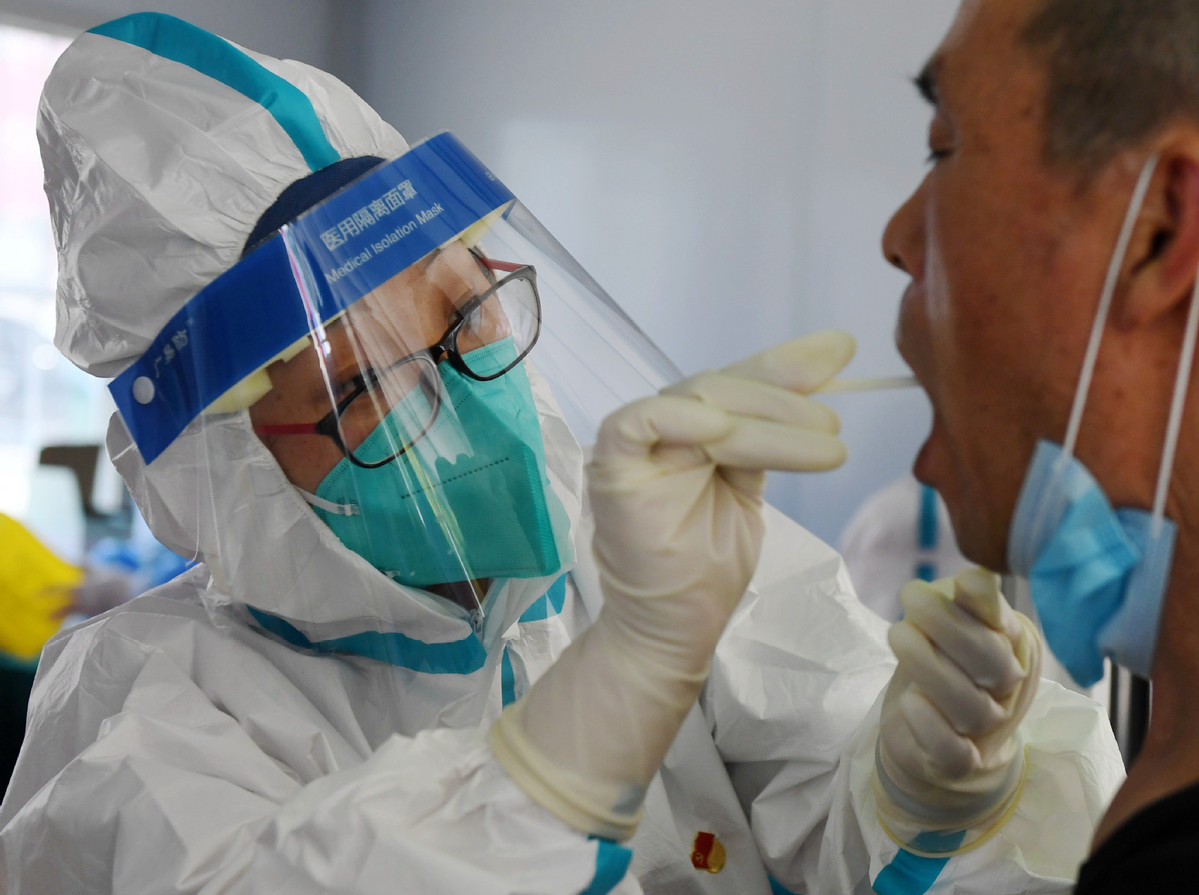Plan greatly expands nucleic acid testing capabilities


All tertiary and secondary general hospitals across the country will be capable of nucleic acid testing for the novel coronavirus before the end of the year, according to a plan released to improve testing for the virus and coping with COVID-19.
Tertiary general hospitals and certain institutions-such as hospitals specialized in infectious diseases and centers for disease control and prevention at all levels-should be able to conduct sampling and testing for the novel coronavirus before the end of September, according to the plan, released on Monday by the Joint Prevention and Control Mechanism of the State Council, a top multidepartmental platform for coping with COVID-19.
Hospitals in China are generally categorized into three tiers. Tier three hospitals are the most sophisticated with multiple differentiated departments, and most of them are provincial or metropolis hospitals. Tier two hospitals are medium-sized and usually also have a number of departments. Tier one hospitals are small and primarily are sought out for general health conditions.
In addition to tertiary general hospitals, which will serve as bases for novel coronavirus testing, 100 mobile testing labs across China will be completed by the end of the year. Each of the labs will be able to handle 10,000 virus samples each day, so 1 million tests can be conducted a day by the mobile labs, the plan said.
The number of hospitals in China exceeded 34,600 by the end of June, including more than 2,800 tertiary hospitals, statistics released by the National Health Commission showed.
Meanwhile, a cross-regional assistance mechanism will be established by year's end so mass testing can be completed within a short time in a certain region in case of local outbreaks of cluster infections, the plan said.
Local authorities across the country should also intensify efforts to train nucleic acid testing professionals, and all such professionals should complete training before the end of the September. Training should be completed upon the completion of building the labs so they can be put into use right away, the plan said.
China has been expanding novel coronavirus testing since the beginning of the outbreak. Testing is regarded as a key measure for COVID-19 control and prevention. In addition, expanded testing can help facilitate the resumption of work and education.
In many areas across China, mandatory nucleic acid testing has covered certain key groups, including medical workers, patients to be hospitalized and people returning from overseas. A guideline released by the National Health Commission in June said authorities across the country should intensify efforts to expand their testing capacity so anyone who wishes can get a nucleic acid test without having to wait for very long.
'Reliable criterion'
Li Jinming, a researcher at the National Center for Clinical Laboratories, said expanded testing is crucial to fight COVID-19.
"The purpose of nucleic acid testing for the virus is for early detection, reporting, isolation and treatment of COVID-19 patients," he said. "A positive result in nucleic acid testing is a most reliable criterion for the diagnosis of the virus."
Mass nucleic acid testing can help identify those infected quickly and plays a very important role in bringing an epidemic under control, he said.
The COVID-19 pandemic has been effectively under control on the Chinese mainland since March, with 10 new confirmed cases reported on Monday, all imported from overseas, according to the National Health Commission.
Following smaller outbreaks in places including Beijing and Dalian, Liaoning province, mass testing was conducted among local populations, which helped bring the outbreaks under control quickly.
By the end of July, China was capable of testing more than 4.8 million nucleic acid samples for the novel coronavirus a day, four times as many as in early March, and 160 million nucleic acid tests had been conducted, Jiao Yahui, an official from the commission's Medical Administration and Supervision Department, said at a news conference in August.
- Henan retailer's reparation policy fosters workers' rights
- Shanghai offers blueprint for waterfront renewal
- University licenses smart fish feeding system for 20 million
- Shandong court sentences former insurance chief for bribery
- Culture high on agenda at Sanya tourism summit
- Chinese cities post strong performance in 2025 global innovation index





































